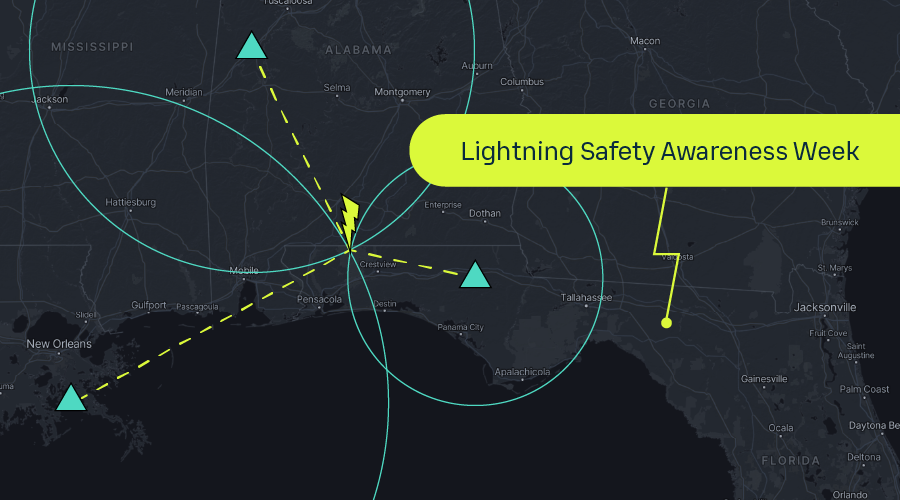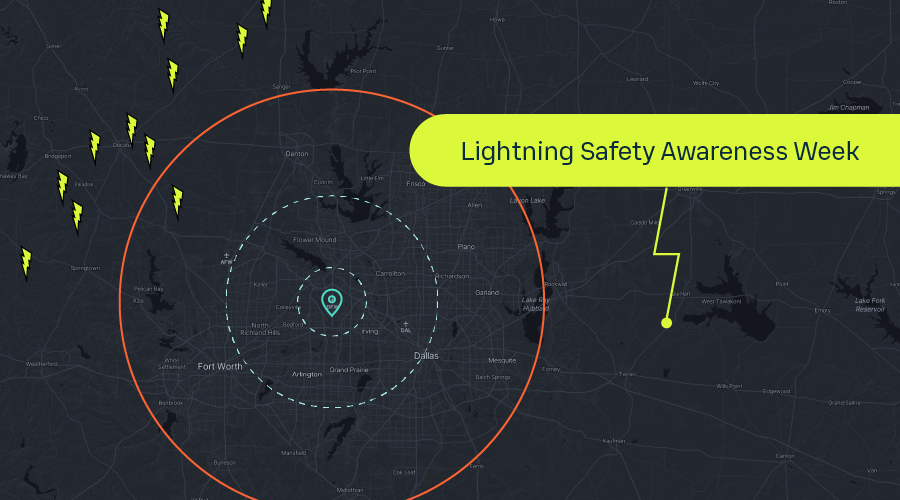Weather has a huge impact on American businesses – and it’s only getting worse. How can companies stay on top of operational risks and make smarter decisions in the face of all this unpredictability?
In 2023, the U.S. saw 77,494 lightning strikes at or near wind farms, and 31% of American wind farms experienced at least one lightning strike per turbine. That’s a lot of electricity in the sky. But it’s not just wind farms feeling the effects.
Lightning, severe weather, and changing climate conditions are a growing threat to industries like ports, mining, agriculture, and construction. How can we prepare for all this unpredictability?
"The U.S. experienced 28 billion-dollar weather disasters last year—the highest number on record,” says Hans Loewenheath, Product Manager at Vaisala Xweather. "These events are causing billions in damage to infrastructure and businesses, and tragically, lives are lost to hurricanes, flooding, heatwaves, and wildfires. Companies are realizing they need a more strategic approach to mitigate these increasingly disruptive and costly events."
In fact, severe storms caused $55 billion in damages in 2023, according to the National Centers for Environmental Information—adjusted for inflation. That’s a huge jump from $40.3 billion in 2020 and just $23 billion in 2017. Lightning storms, tornadoes, and hurricanes are becoming more intense and frequent, and businesses are feeling the impact.
This year, with La Niña and the ongoing climate shifts, NOAA is predicting a particularly active hurricane season. Between 17 and 25 named storms are expected to hit the Atlantic.
With all this in mind, businesses must factor weather-related risks into their planning. And that’s where better weather insights come in. By accessing more accurate, localized weather data—beyond the typical “chance of rain” forecast—businesses can make smarter decisions about their operational risks. That’s where Xweather Insight comes in, giving companies the confidence to protect and optimize their operations.
“Public weather forecasts just aren’t precise enough for on-the-ground decisions,” Loewenheath explains. “Public forecasts cover broad areas—county or state levels—while operations managers need to make decisions about very specific locations. That’s the challenge we’re helping companies solve.”
Hans Loewenheath, Product Manager - Vaisala Xweather
Vaisala Xweather offers real-time lightning detection and precise forecasting for up to 60 minutes ahead, enabling businesses to act before a storm hits. For example, if an airport grounds flights due to lightning risk, they can optimize the timing for staff evacuations. For a wind farm, technicians may need more time to descend from turbines, so alert distances and “all-clear” timers can be adjusted accordingly.
The threat of lightning is particularly disruptive in the energy sector, especially for wind farms. Most U.S. wind farms are located in Texas, Iowa, and Oklahoma, the top three states for lightning activity. In fact, three wind farms experienced over 10 lightning strikes per turbine last year, and two in Texas and Oklahoma saw more than 1,000 strikes each.
While wind turbines are built to withstand lightning strikes, especially those that hit the blades, they’re not invincible. Lightning damage accounts for 1-3% of turbine strikes, costing the industry $100 million annually. This damage contributes to 60% of blade losses and 20% of operational losses. The bottom line? Lightning can lead to costly repairs and lost power production.
It’s not just about protecting infrastructure; it’s about protecting people. Industries like mining, where employees are often working in lightning-prone areas, can’t afford to shut down operations every time a storm is in the vicinity. They need to know when and where lightning is coming so they can give workers enough time to get to safety without sacrificing productivity.
The same applies to construction sites, ports, agriculture, and other industries that work outdoors. In places like Texas, Oklahoma, and Florida—where intense winds, lightning, and thunderstorms are common—operations need to balance safety with efficiency. Shutting down a construction site for a day due to a storm miles away may be safe, but it’s not always the most efficient decision.
“Lightning is unpredictable, and that is why Xweather helps businesses set up procedures to manage the risks effectively,” Loewenheath says. “It’s not about relying on weather apps or guesswork anymore. You need something you can count on—something you can show your investors or board members to prove you’re taking these risks seriously.”
Xweather Protect equips businesses with alerts, situational awareness, and insights they need to act quickly and confidently. By leveraging weather intelligence, companies can improve resilience and prepare better for emergencies—ultimately reducing both safety risks and operational downtime.
The original article by Brittany Golob published on Raconteur.net
Images by Raconteur


